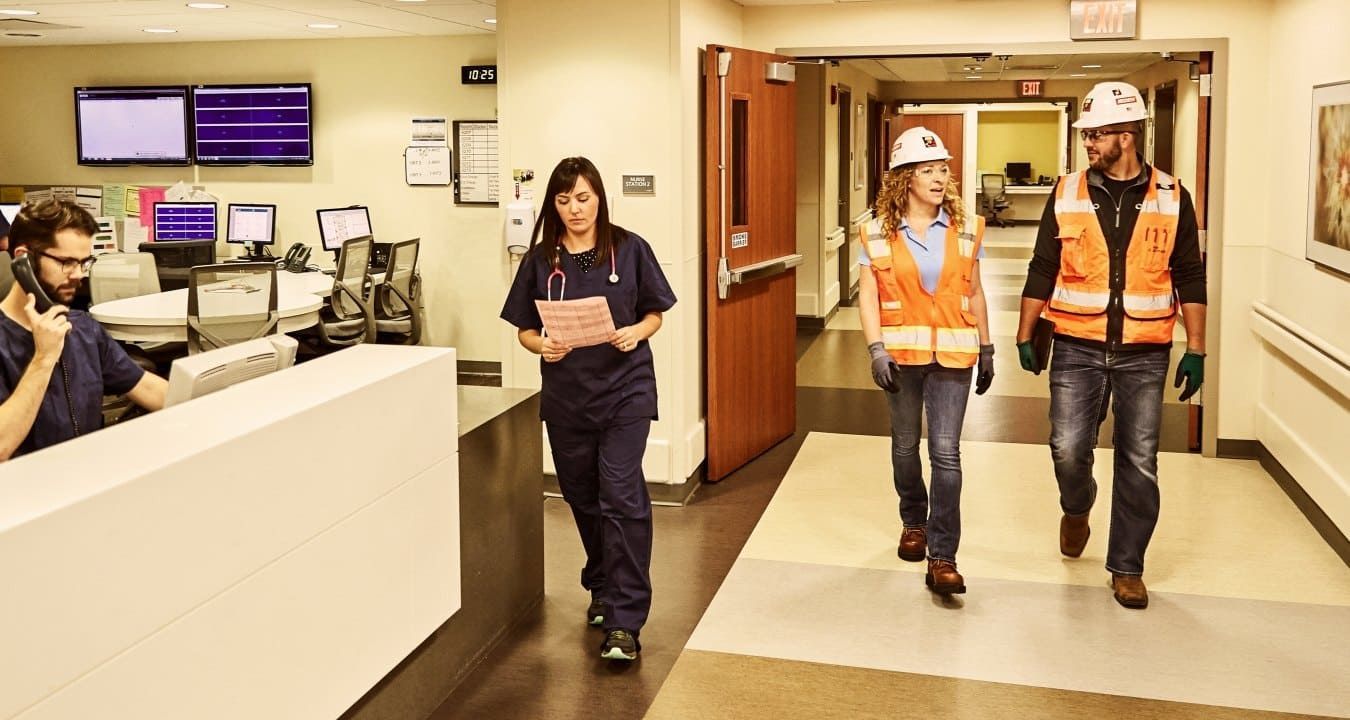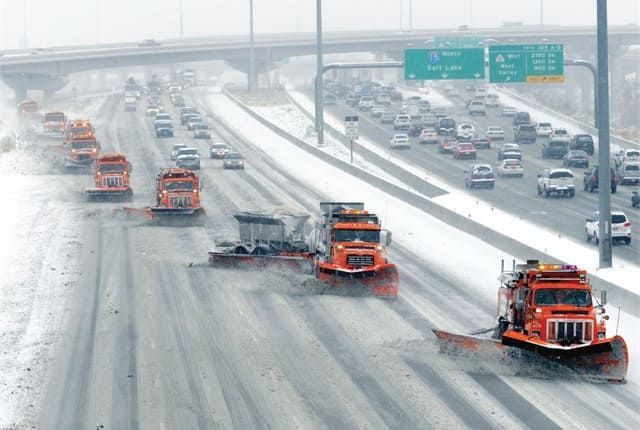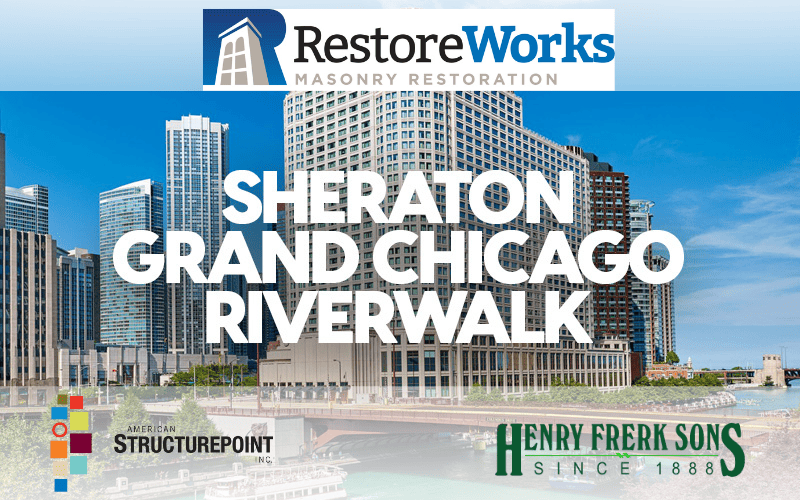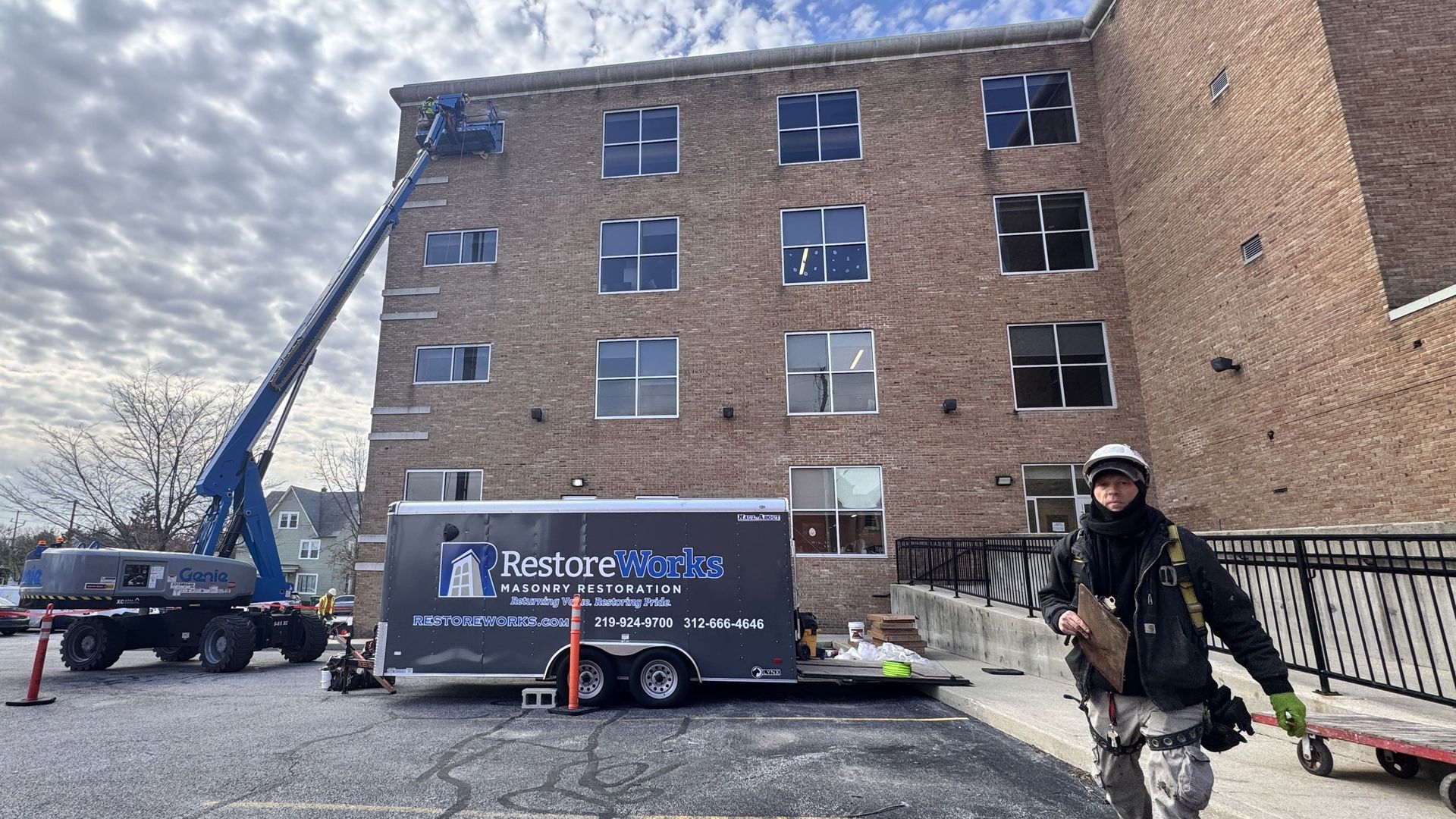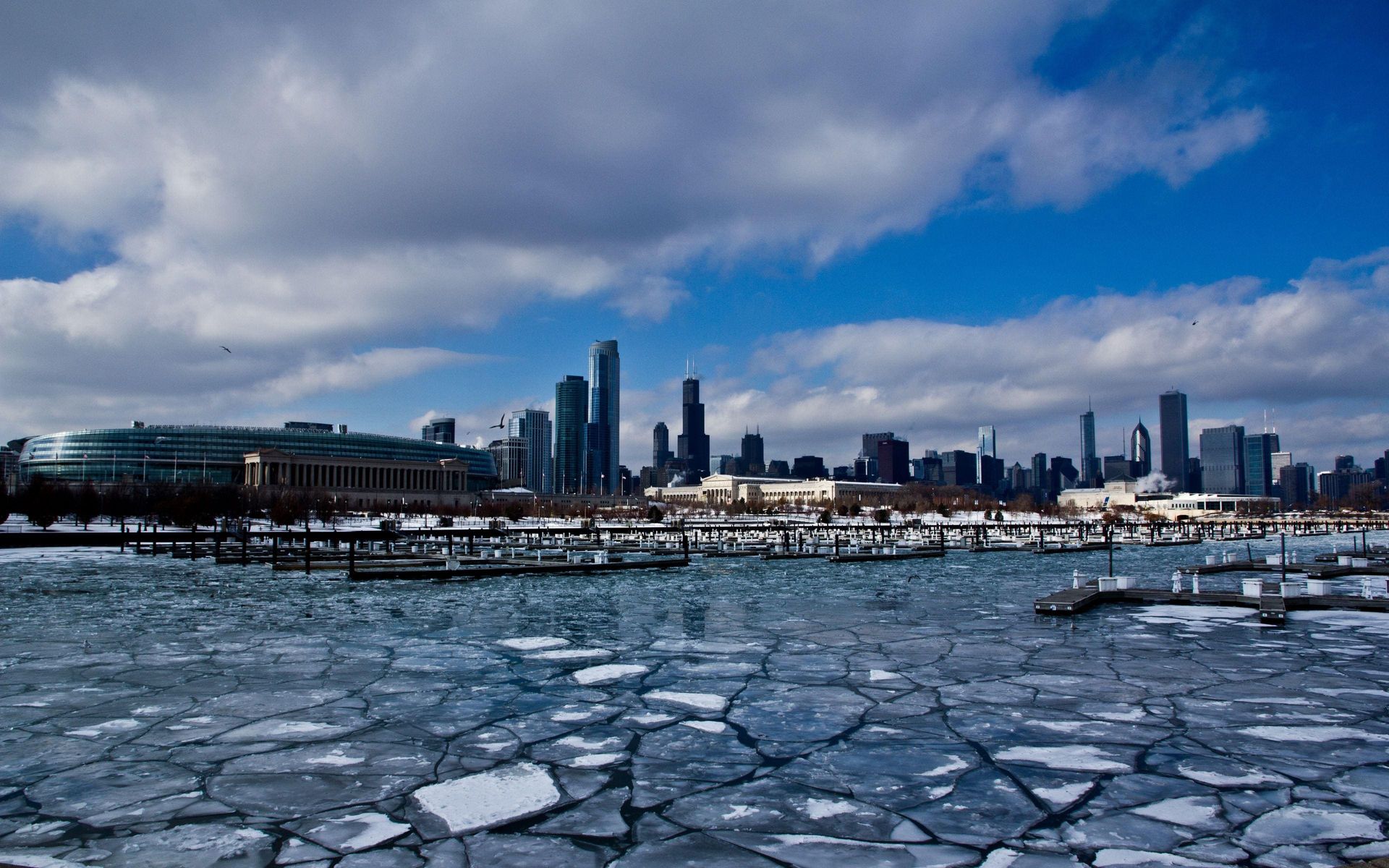Hospitals are among the most complex facilities to maintain, operating 24/7 with strict regulations around patient safety and infection control. When it comes to hospital masonry restoration, timing and strategic planning are key to minimizing disruptions while ensuring structural integrity.
According to the Financial Tribune, the estimated lifespan of hospitals in some areas is around 30-40 years before needing renovation. Aging infrastructure is a growing concern, especially for facilities with masonry facades that require concrete facade repair, masonry lintel repair, or commercial masonry tuckpointing.
So, when is the best time to schedule masonry restoration, and how can facilities managers and project teams reduce disruptions? Here’s what you need to know.
1. The Best Time to Plan Hospital Masonry Restoration
Healthcare facilities require a phased approach to restoration, balancing structural needs with patient care. Here’s the best timing for different types of masonry work:
Spring & Summer: Ideal for Exterior Work
- Best season for large-scale facade restoration, as masonry materials cure better in warmer temperatures.
- Less risk of weather-related delays compared to winter months.
- Ideal for addressing concrete facade repair and exterior sealant failures caused by winter freeze-thaw cycles.
The facade restoration at Delnor-Community Hospital was timed strategically to take advantage of warmer weather, reducing moisture risk while refreshing aging architectural elements.
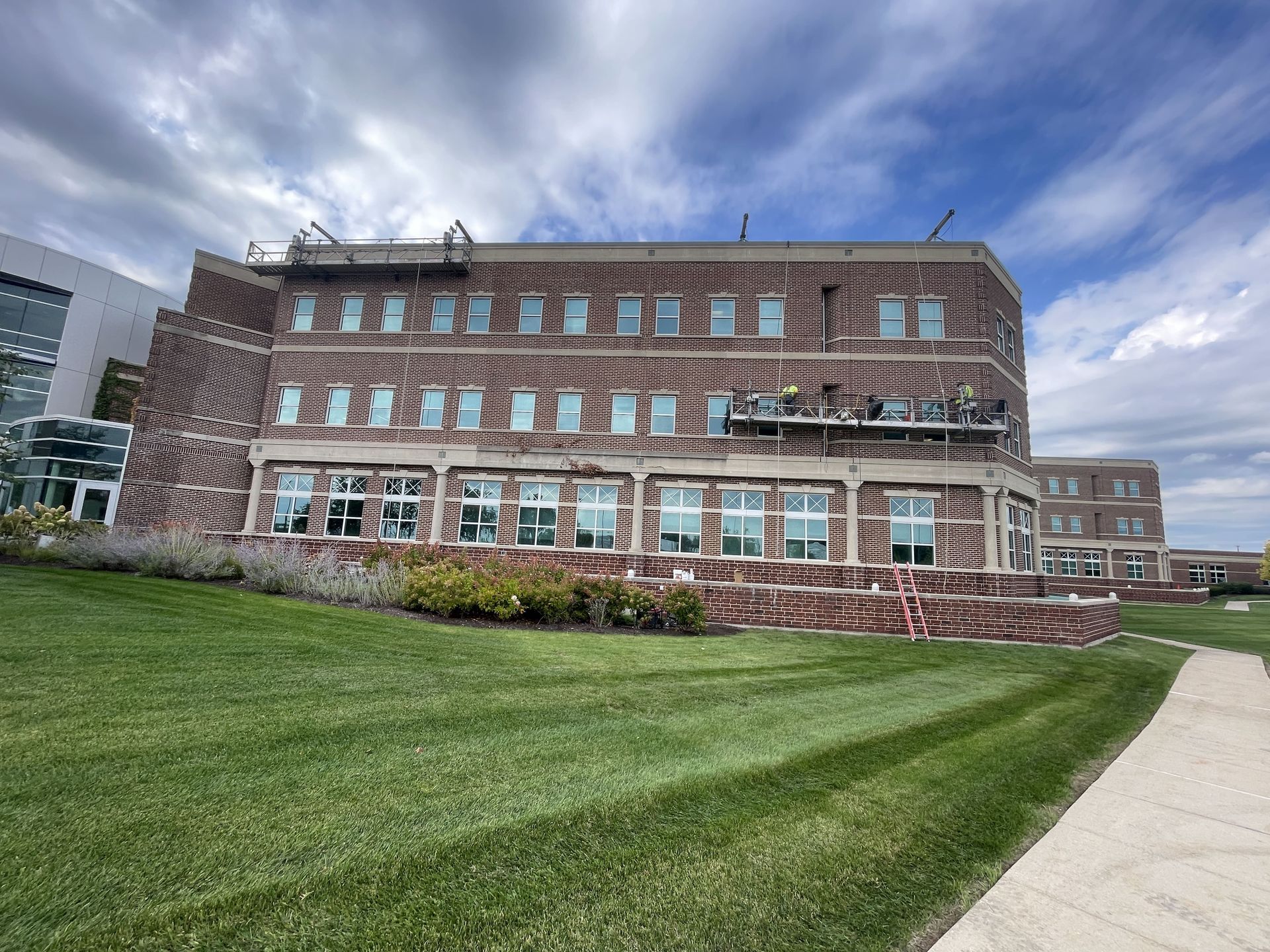
Winter: Best for Planning & Interior Restoration
- Conduct facade inspections to identify areas requiring masonry lintel repair or tuckpointing services.
- Complete interior work, such as restorative masonry cleaning in lobbies, hallways, and mechanical rooms.
- Schedule spring projects in advance to secure contractor availability and avoid emergency repairs.
Avoid Peak Patient Seasons When Possible
- Flu season (late fall and winter) increases hospital occupancy, making exterior work more challenging.
- Coordinate restoration projects around hospital schedules, such as lower patient admissions in early summer.
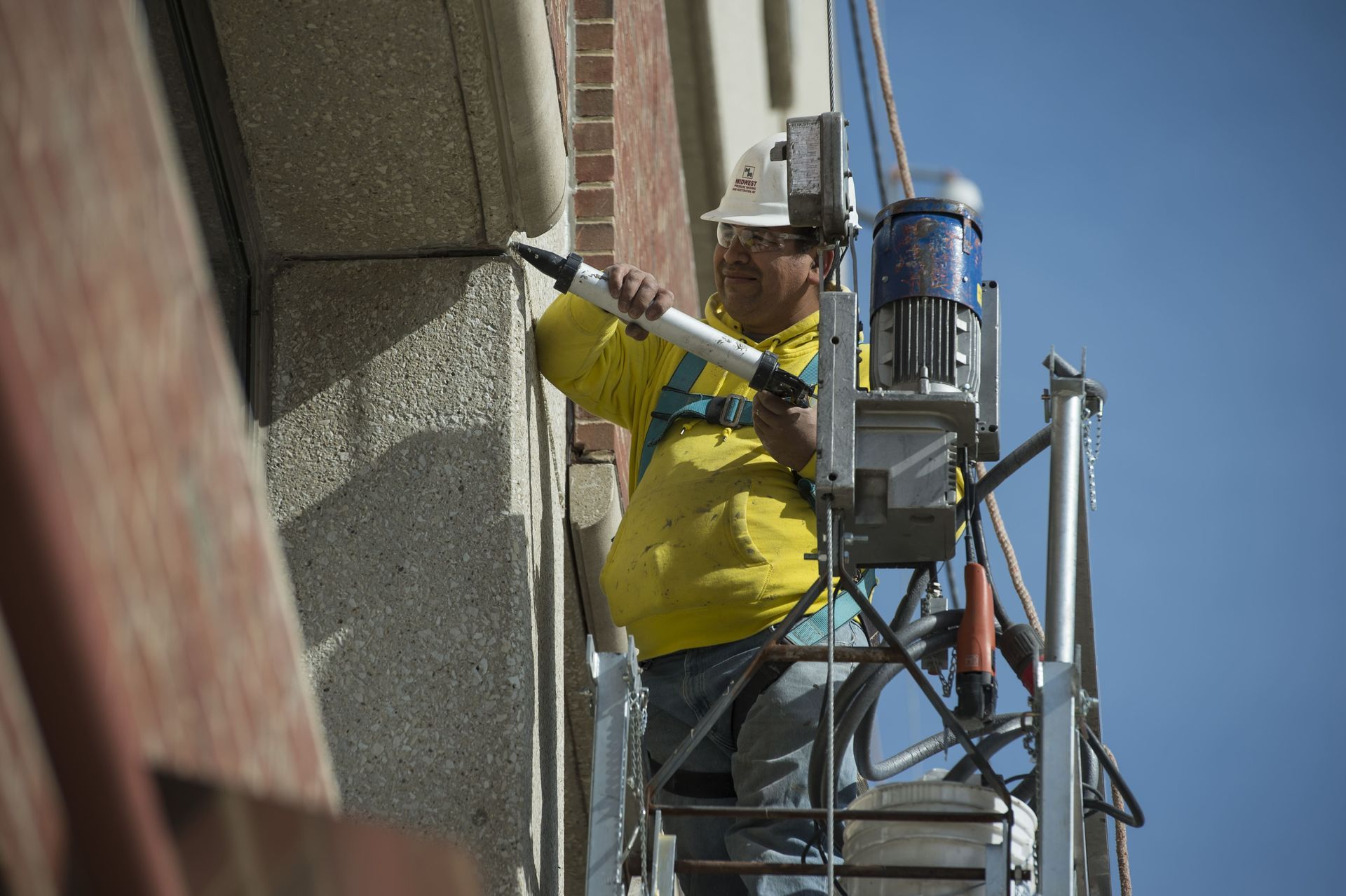
2. How to Minimize Disruptions
Masonry restoration in hospitals requires a highly coordinated approach to maintain daily operations while ensuring worker and patient safety. Key strategies include:
Prioritize Safety & Compliance
- Work with contractors experienced in hospital and healthcare masonry restoration who understand infection control and safety protocols.
- Implement dust containment systems and HEPA filtration in sensitive areas, In concrete dust samples, over 90% of particles were found to be smaller than 2.5 μm, presenting a major respiratory health concern.
Schedule Work in Phases
- Divide restoration into smaller sections to limit patient impact.
- Focus on non-critical areas first, then move to high-traffic zones during off-hours.
Utilize Off-Hours & Weekend Work
- Conduct noisy work, such as grinding for tuckpointing, during early mornings, evenings, or weekends.
- Use temporary enclosures to isolate work areas near patient zones.
Leverage Modern Access Techniques
- Swing stages and rope access minimize scaffolding requirements, keeping hospital entrances and walkways clear.
- Drone inspections can quickly assess restoration needs without disrupting operations.
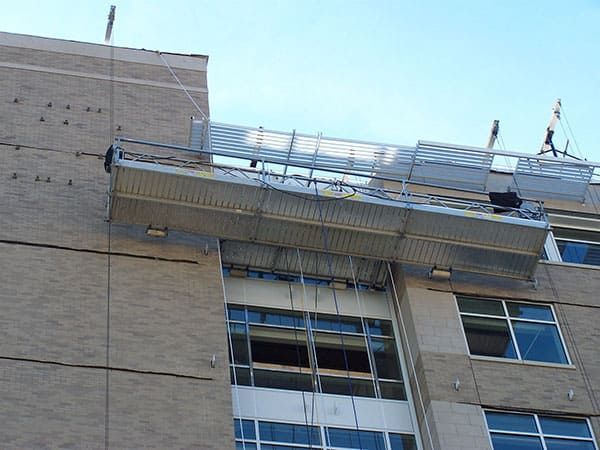
3. Common Hospital Masonry Issues & Solutions
Hospitals, particularly those with aging structures, are vulnerable to masonry issues that, if left unaddressed, can lead to costly repairs. Common concerns include:
Deteriorating Facades – Concrete facade repair specialists can address cracking, spalling, and water infiltration.
Lintel Damage – Masonry lintel replacement ensures long-term structural stability over windows and entryways.
Sealant Failures – Sealant repair services prevent moisture intrusion and improve energy efficiency.
Weakened Mortar Joints – Tuckpointing restores strength to aging brick and stone joints.
Staining & Efflorescence – Masonry cleaning removes biological growth and atmospheric staining that can degrade the building’s exterior.
Projects like Evanston Hospital’s historic masonry restoration involved targeted repairs to parapet capstones, door lintels, and mortar joints to reinforce the integrity of the original structure while preserving its legacy.
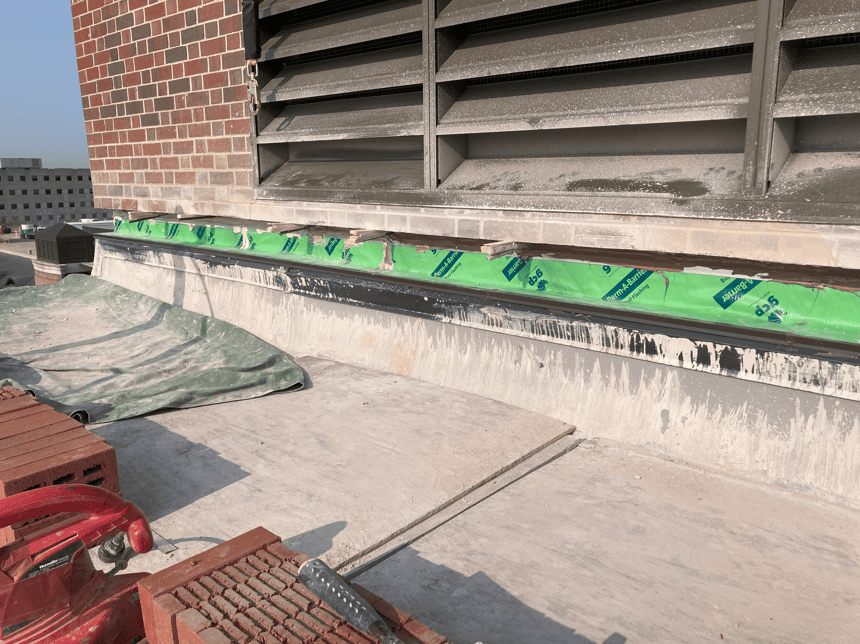
Why Preventive Maintenance Matters
Per FacilityONE, implementing preventive maintenance plans can help healthcare facilities extend equipment lifespan, optimize operational costs, and improve patient care quality. Ignoring minor masonry issues can lead to costly structural failures, water damage, and increased long-term facility expenses.
Preventive restoration work, like the waterproofing and masonry repairs at Advocate South Suburban Hospital, can help avoid more invasive and expensive emergency repairs later on.
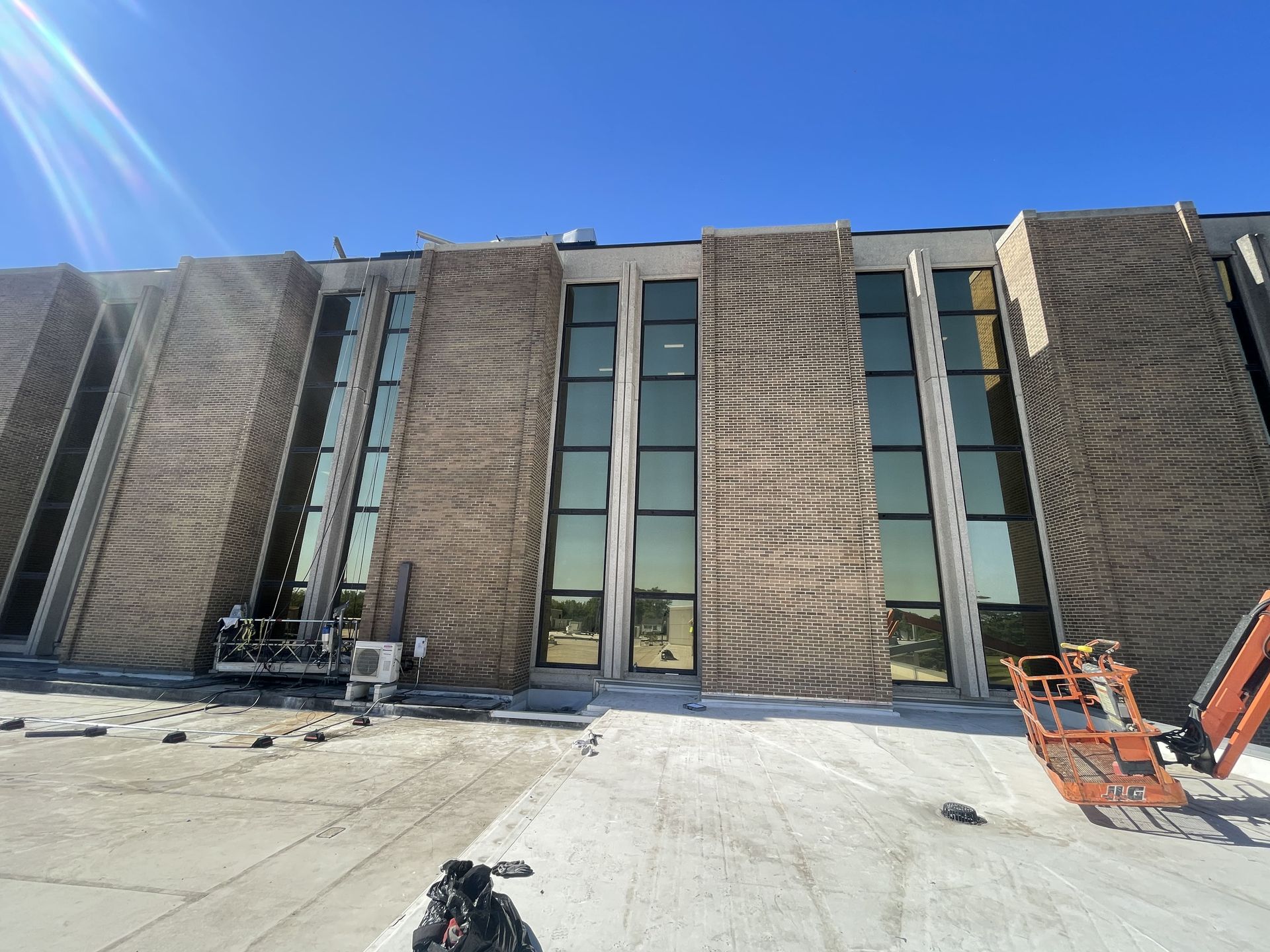
4. How Masonry Affects Hospital Energy Efficiency
Energy costs typically account for 5 to 10% of a hospital's entire budget, making efficiency a top priority. Failing masonry components contribute to energy waste in the following ways:
- Air leaks through cracked facades = Increased heating/cooling costs.
- Deteriorated sealants = Moisture penetration leading to insulation damage.
- Weakened mortar joints = Cold air infiltration during winter months.
The University of Wisconsin Health (UW Health) improved energy efficiency by 24% across 4.6 million square feet of space, saving an estimated $13 million over five years, emphasizing the potential cost savings when prioritizing energy efficiency.
5. Why Work with a Specialized Masonry Contractor?
Hospitals require specialized contractors who understand the complexities of working in active healthcare environments. Here’s what to look for:
Healthcare Experience – A contractor familiar with hospital compliance, infection control, and safety standards.
Union Craftsmanship – Skilled tradespeople ensure precision and quality in every repair.
Proven Safety Record – The contractor should follow OSHA regulations and hospital-specific safety requirements.
Comprehensive Services – From concrete facade restoration to restorative masonry cleaning, a full-service provider streamlines project execution.
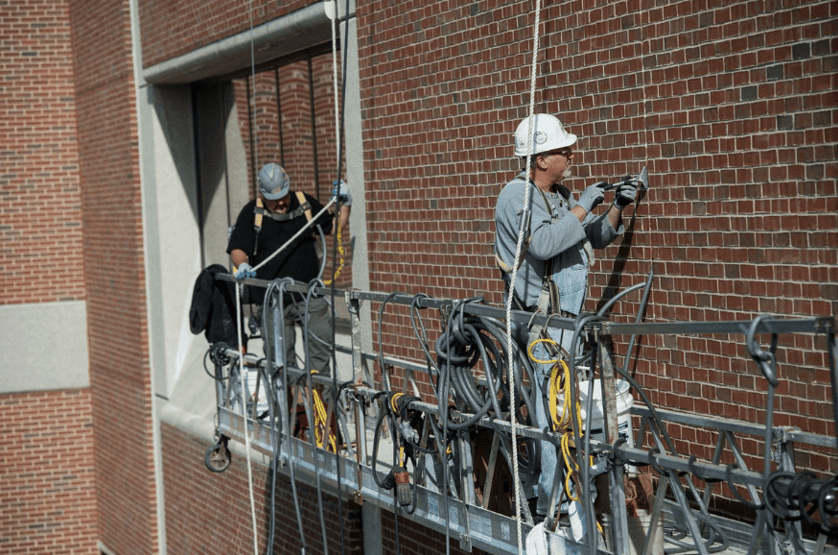
Plan Ahead to Protect Your Hospital’s Masonry
This is Hospitals and healthcare facilities require a proactive approach to masonry restoration. By planning ahead and working with an experienced contractor, you can maintain structural integrity, minimize disruptions, and extend the life of your facility’s exterior.
With the 2021 American Rescue Plan Act allocating $1 trillion for healthcare facility construction, renovation, and modernization, there's a significant focus on upgrading hospitals, per Construction Business Owner.
As a proud member of The American Society for Health Care Engineering (ASHE), RestoreWorks understands the unique challenges of hospital masonry restoration and the importance of strategic planning to minimize disruptions to patient care. Contact RestoreWorks for hospital restoration services you can trust.

